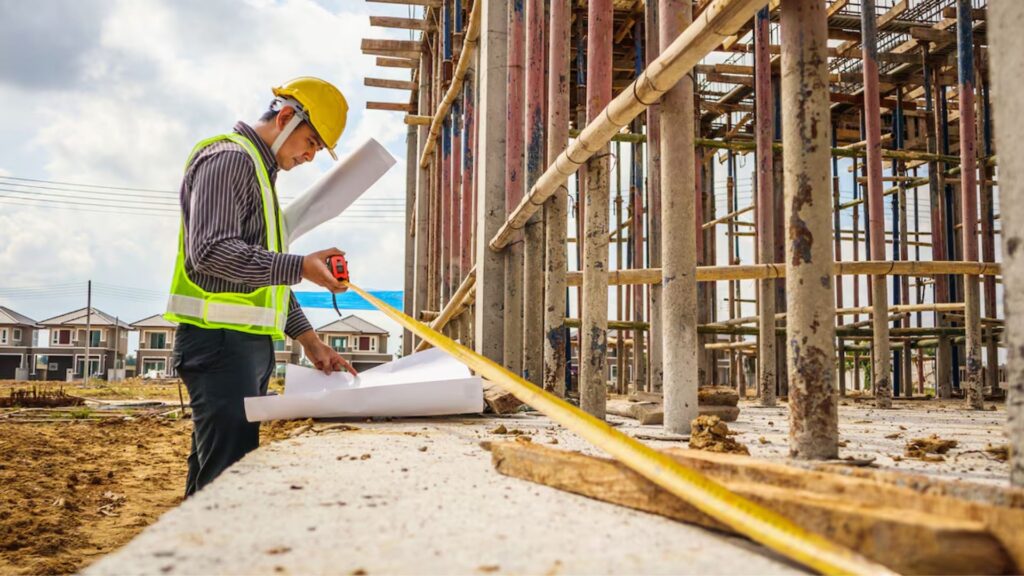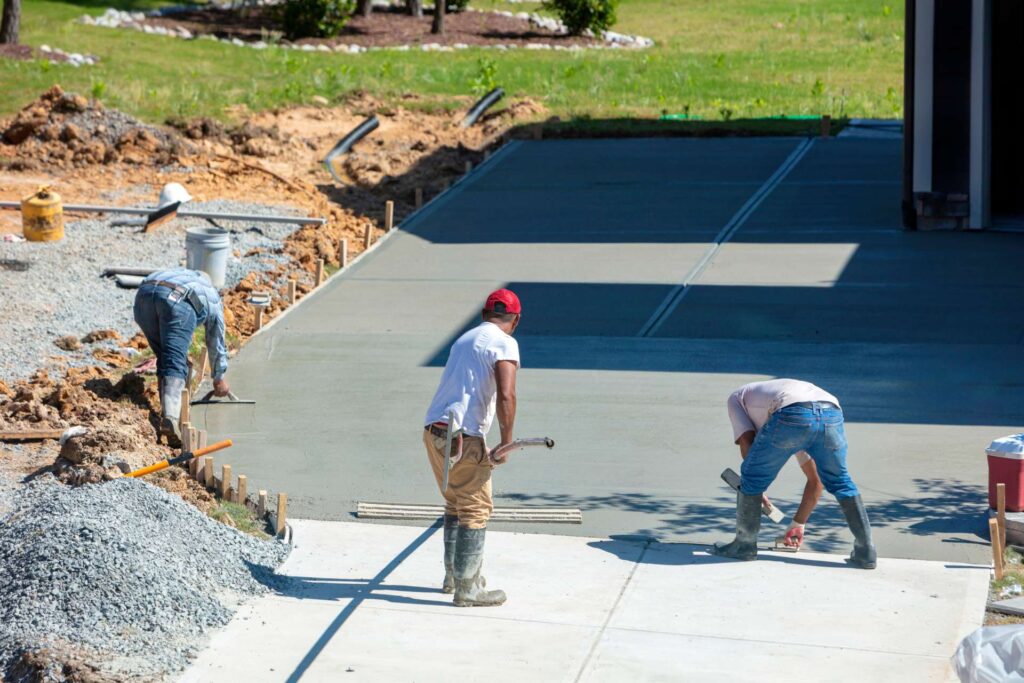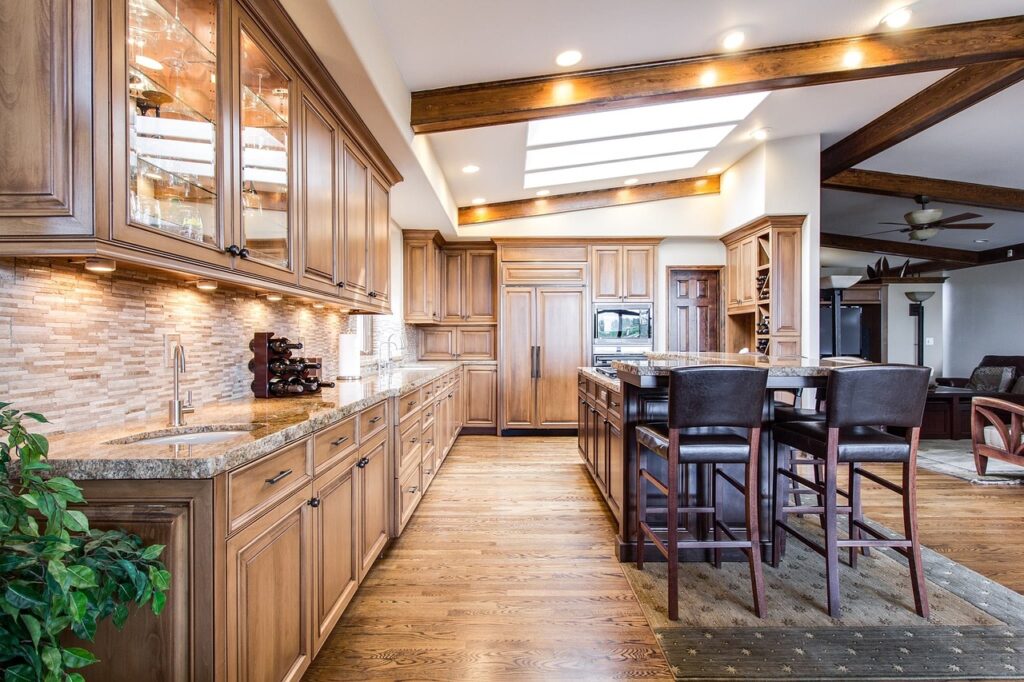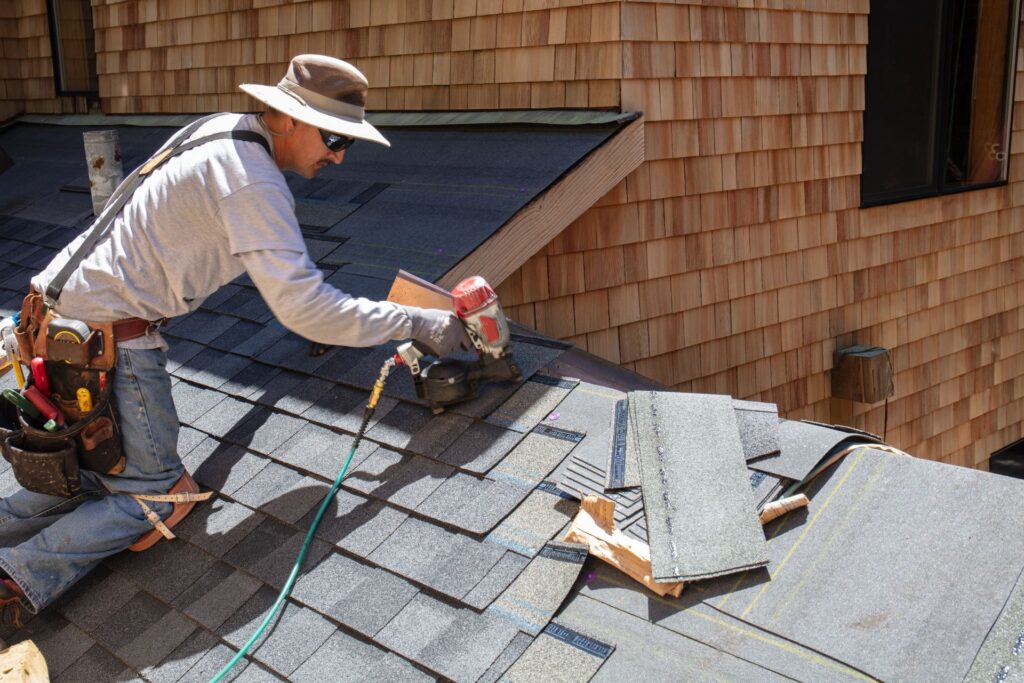Welcome to your go-to guide for understanding the hourly rate for a self-employed builder in 2024. Whether you’re a homeowner planning a renovation, a developer embarking on a large-scale project, or even an aspiring builder looking to set your own rates, knowing what to expect can save you time, money, and hassle. In this post, we’ll break down what influences builder rates, the national averages, and how to ensure you’re getting the best value for your money—whether you’re hiring a pro or working to establish your own business in the industry. Let’s dive in and uncover everything you need to know about self-employed builder rates this year.
On average, the hourly rate for a self-employed builder ranges between $30 and $80, depending on factors such as location, experience, project complexity, and the builder’s specialty. Builders in urban areas or those with more expertise may charge higher rates, while smaller projects or rural locations may see lower costs.
- Understanding The Role Of A Self-Employed Builder
- National Averages For Hourly Rates
- Factors That Influence Hourly Rates
- How To Calculate A Fair Hourly Rate As A Self-Employed Builder
- Negotiating Hourly Rates With Clients
- Common Mistakes When Setting Hourly Rates
- What Clients Should Know About Builder Hourly Rates
- FAQs: About Hourly Rate For Self Employed Builder
- Conclusion
- Find A Professional Builders Company Near You!
Understanding The Role Of A Self-Employed Builder
A self-employed builder is a skilled tradesperson who operates independently, providing various construction services. Unlike builders working under a larger firm, self-employed builders are responsible for managing their own projects, setting their schedules, and handling client relationships. They often offer a range of services, such as carpentry, bricklaying, plumbing, and general construction. Their expertise allows them to take on both small and large-scale projects, giving clients tailored solutions for home repairs, renovations, and custom building work.
The scope of work for self-employed builders can vary significantly. Some may focus on smaller tasks, such as repairing doors, installing fixtures, or fixing leaks. Others may specialize in more complex projects, such as building home extensions, renovating entire houses, or constructing custom homes from the ground up. The size and complexity of the project often depend on the builder’s expertise and the client’s needs.
Choosing to become a self-employed builder offers several benefits. One of the biggest advantages is the flexibility it provides, allowing builders to manage their own time and choose projects that align with their interests. Self-employment also presents the potential for higher earnings since builders set their own rates and control their workload. Additionally, the personal satisfaction that comes from seeing a project through from start to finish, combined with the freedom to build a business on their terms, makes self-employment an attractive option in the building industry.

National Averages For Hourly Rates
Understanding the national averages for hourly rates in the building and construction industry is essential for both professionals and clients. As of 2024, the hourly rates for self-employed builders show significant variation depending on location, job complexity, and specific expertise. Below, we break down the current data and trends, comparing self-employed builders’ hourly rates to those of salaried or contracted builders, and providing real-world examples to give a clearer picture of the market.
Current Data on Average Rates (2024)
As of 2024, self-employed builders typically charge between $30 and $80 per hour, although this range can fluctuate depending on factors such as location, project scope, and skill level. For instance, builders operating in urban areas such as New York City or Los Angeles often charge on the higher end of the spectrum due to the increased cost of living and demand for services. In contrast, builders in rural regions or less populated states like Kansas or Idaho might offer lower rates, averaging closer to the $30-$50 per hour range.
Furthermore, specialized services such as custom home building or renovation can drive rates even higher, with some professionals charging upwards of $100 per hour for niche expertise. On the lower end, general laborers or builders handling less complex tasks may charge as little as $25-$30 per hour, especially in less competitive markets.
How Hourly Rates Compare to Salaried Builders
Self-employed builders typically earn more on an hourly basis than their salaried counterparts. A salaried builder employed by a construction company or contractor generally receives a fixed annual salary, which, when broken down into an hourly wage, may be equivalent to $20-$40 per hour. While the salaried option provides stability and benefits like health insurance and paid time off, self-employed builders often charge higher rates to cover expenses such as insurance, tools, and potential downtime between jobs.
Self-employment offers more flexibility and the potential for higher earnings on a project-by-project basis, but it also carries more financial risks and variability. In contrast, salaried workers enjoy consistent income regardless of the economic climate or job availability.
Examples of Hourly Rates Across Regions and Job Types
To provide a better understanding, here are examples of typical hourly rates for self-employed builders across various regions and job types:
- New York City, NY: For high-demand urban areas, self-employed builders with general expertise may charge between $60 and $100 per hour. Specialized trades, like electricians or carpenters, may command even higher rates, especially for custom projects or luxury renovations.
- Los Angeles, CA: Similar to NYC, builders in LA often fall within the $50-$90 per hour range. The city’s high cost of living and real estate market drive up demand for quality building services, influencing the rates.
- Denver, CO: In mid-sized cities, self-employed builders can charge anywhere from $40 to $70 per hour, with the lower end reserved for smaller projects or simpler tasks, and higher rates for more complex work, such as home additions or remodels.
- Rural Kentucky: In rural or less populated areas, self-employed builders may charge around $30-$50 per hour. The reduced demand and lower living costs generally result in lower prices, though specialized skills can still command a premium in these regions.
These examples highlight the impact of geographic location and job type on hourly rates, offering insight into the variability in the building industry.
By understanding these national averages and regional differences, both builders and clients can better gauge what to expect in terms of compensation or project costs in 2024.

Factors That Influence Hourly Rates
When hiring a builder, understanding the factors that influence their hourly rates can help you determine what’s fair for your project. The hourly rates of builders can vary significantly, depending on various elements. Below are some key aspects that influence how builders set their hourly fees.
1. Experience and Expertise
One of the most significant factors that affect a builder’s hourly rate is their experience and skill set. Builders with many years of experience typically command higher rates than those just starting in the field. This is because seasoned builders often possess a broader range of skills, have a history of successfully completing projects, and can handle more complex tasks with efficiency.
Additionally, builders with specialized certifications or expertise in specific types of construction work (such as green building techniques or high-end custom homes) may charge a premium. These certifications not only reflect a higher level of skill but also an investment in continued education, which adds value to their service.
2. Location and Demand
The location of the project plays a huge role in determining a builder’s hourly rate. Builders in major metropolitan areas or regions with high demand often charge more. For instance, a builder in a large city like New York or Los Angeles is likely to charge more per hour compared to one in a rural town due to the higher cost of living in urban areas.
In areas where there’s a high demand for construction, such as booming real estate markets or regions experiencing rapid development, builders may also raise their rates. High demand means builders have more job opportunities, giving them leverage to set higher prices.
3. Type of Project
The complexity and scale of a construction project significantly impact the builder’s hourly rate. Simple projects, such as repairing a deck or installing shelves, may require less time and fewer specialized skills, resulting in a lower hourly rate. On the other hand, larger and more complex jobs, like building a new house or remodeling a kitchen, require detailed planning, advanced skills, and more time, which justifies a higher rate.
Builders may also adjust their rates based on the level of customization or the unique challenges of a project. For instance, projects that involve intricate designs or working in tight spaces can push rates higher due to the additional expertise and time required.
4. Tools and Equipment
Builders often factor in the cost of their tools, equipment, and transportation into their hourly rates. Quality tools and machinery are essential for delivering top-notch work, and maintaining these tools comes at a cost. Additionally, the wear and tear on vehicles used to transport tools and materials to and from job sites can influence pricing.
Some builders may also need specialized equipment for certain projects, such as cranes or large power tools. In these cases, the cost of renting or maintaining such equipment can lead to higher hourly rates to cover these expenses.
5. Overhead Costs (Licensing, Insurance, etc.)
Running a construction business involves several overhead costs that builders must account for when setting their hourly rates. These include the cost of business licensing, liability insurance, workers’ compensation, and taxes. Builders must ensure they are properly licensed to work in your area, which can involve fees and renewals.
Insurance is another critical factor, as it protects both the builder and the client from unforeseen accidents or damages. Builders also need to cover expenses related to marketing, office management, and other business operations. All these overhead costs can increase the hourly rate, as builders need to maintain profitability while adhering to legal and safety standards.
In conclusion, a builder’s hourly rate is influenced by a combination of their experience, location, the type of project, equipment needs, and business overhead. Understanding these factors can help you make an informed decision when hiring a builder for your project.

How To Calculate A Fair Hourly Rate As A Self-Employed Builder
Setting a fair hourly rate as a self-employed builder can feel overwhelming, especially when you’re balancing various expenses, business costs, and personal financial goals. However, by breaking the process down into manageable steps, you can determine a rate that covers your needs while ensuring profitability. Here’s a practical guide on how to do it, along with a clear example calculation to guide you through the process.
Step-by-Step Guide to Calculating Your Hourly Rate
1. Estimate Your Annual Income Needs
The first step in calculating your hourly rate is to figure out how much you need to earn each year to cover your personal expenses, taxes, and savings. Consider all the costs that you need to meet in your daily life, including:
- Housing (rent or mortgage)
- Utilities
- Groceries
- Healthcare
- Personal savings and retirement contributions
- Taxes (both income and self-employment)
Once you have a clear picture of your yearly financial obligations, you’ll have a baseline income goal. This is the minimum amount of money you need to generate annually to sustain yourself and your business.
2. Calculate Your Billable Hours
Unlike a salaried job, as a self-employed builder, you won’t be working on client projects 40 hours a week all year round. It’s crucial to account for non-billable hours spent on tasks such as:
- Administrative work (emails, invoicing, etc.)
- Marketing and acquiring new clients
- Tool and equipment maintenance
- Taking vacations, holidays, or sick days
Start by estimating how many hours you realistically expect to work on client projects over the course of the year. For example, you might plan to work 48 weeks a year, leaving four weeks for time off, and work 30 billable hours per week after accounting for administrative time. This would give you a total of 1,440 billable hours per year (48 weeks x 30 hours).
3. Add Your Business Costs
Running a building business comes with various overhead costs that you need to factor into your rate. Some common business expenses include:
- Insurance (liability, workers’ compensation, etc.)
- Tools and equipment
- Materials for projects
- Vehicle maintenance and fuel
- Office supplies and technology
- Marketing and advertising
Calculate the total annual cost of these expenses. For example, if your business expenses come to $20,000 per year, you need to account for that amount in your hourly rate calculation.
4. Factor in a Profit Margin
Beyond just covering your expenses, you need to make sure your business generates a profit. This is the money that allows your business to grow, reinvest in better tools, or provide a financial cushion for slow periods. Many self-employed builders aim for a profit margin between 10-30%, depending on their goals and industry standards.
To calculate your profit margin, decide what percentage of profit you want to make on top of your expenses. For instance, if you aim for a 20% profit margin, you’ll need to add this percentage to your rate after covering personal and business costs.
Example Calculation: Determining a Builder’s Hourly Rate
Let’s walk through a simplified example based on the steps above. Imagine you’re a self-employed builder who has estimated the following:
- Annual Income Needs: $60,000 (to cover living expenses, taxes, and savings)
- Annual Billable Hours: 1,440 hours (48 weeks x 30 billable hours per week)
- Annual Business Costs: $20,000 (insurance, tools, materials, etc.)
- Profit Margin: 20%
Step 1: Combine Income Needs and Business Costs
To determine the total income your business needs to generate annually, combine your personal income needs and business costs:
- Total Income Required=$60,000+$20,000=$80,000
Step 2: Calculate Base Hourly Rate
Next, divide the total income required by the number of billable hours to find your base hourly rate:
- Base Hourly Rate=$80,0001/440 hours=$55.56
Step 3: Add Profit Margin
Now, factor in your desired profit margin. In this example, you want a 20% profit margin:
- Profit Percentage=1+0.20=1.20
So, your final hourly rate would be:
- Final Hourly Rate=$55.56×1.20=$66.67
Final Thoughts
By following these steps, you can calculate an hourly rate that not only covers your expenses but also ensures your business is profitable. Remember, your rate isn’t set in stone—you should revisit it periodically, especially as your costs, business volume, or financial goals change.
Ultimately, setting a fair and competitive rate is about understanding both your financial needs and the value you bring to your clients. By taking the time to go through this calculation, you’re positioning yourself for sustainable success as a self-employed builder.

Negotiating Hourly Rates With Clients
When it comes to running a successful business, one of the key aspects is ensuring you’re charging the right rates for your services while maintaining a good relationship with your clients. Negotiating hourly rates can be tricky, but with a clear strategy, you can communicate effectively, ensure clients see the value in your work, and maintain profitability. Here’s a full breakdown of how to approach these negotiations, whether you’re just starting out or have years of experience in your field.
Transparency and Communication
One of the most important things to establish from the beginning is transparency. Clients appreciate knowing exactly what they are paying for and why. Here’s how you can approach this:
1. Clearly Define Your Rates: Be upfront about your hourly rate and what it covers. This includes outlining all the specific services or tasks that fall under your rate. For instance, if your rate includes consultation time, project management, or any other additional services, make sure the client knows this.
2. Break Down the Costs: Explain to your client how you’ve arrived at your hourly rate. Highlight the factors involved, such as your experience, overhead costs, tools or software you use, and other resources. This helps the client understand that you’re not just throwing out a number, but that your rate is calculated and fair.
3. Set Expectations: Clear communication helps prevent misunderstandings. Let clients know when and how they will be billed (e.g., weekly, bi-weekly, or monthly), and outline any potential additional costs that could arise if the scope of work changes.
Explaining Value
Explaining your value is crucial when negotiating rates. Clients need to understand that they are paying for more than just your time—they are investing in the quality and reliability of the service you provide. Here’s how to present that value:
1. Emphasize Your Expertise: One of the easiest ways to justify your hourly rate is by highlighting your skills and experience. If you’ve been in the industry for a while, your expertise allows you to complete work efficiently, with a high level of quality. Mention any relevant certifications, past projects, or unique skills that set you apart from others.
2. Show the Quality of Your Work: If possible, share testimonials or case studies that demonstrate how your work has benefited previous clients. When clients see the results you’ve delivered for others, they’ll be more willing to agree to your rate.
3. Reliability and Peace of Mind: Explain that with you, they’re not just hiring someone to complete a job, but someone who will deliver consistent, reliable results. Clients often prefer to pay a bit more for peace of mind, knowing they won’t have to worry about missed deadlines, poor-quality work, or hidden costs.
Room for Negotiation
Negotiations are a natural part of business, but it’s important to approach them wisely to maintain your profitability. Here are some key strategies:
1. Set Your Baseline: Before any negotiation, know your minimum acceptable rate. This ensures you don’t end up accepting a job that’s not financially sustainable. Be confident in stating this rate if a client pushes for a lower price.
2. Be Open to Compromise: While it’s important to protect your bottom line, there are times when a compromise makes sense. For instance, if a client promises ongoing work or the project provides excellent exposure or networking opportunities, you might consider a slight reduction.
3. Frame It as a Partnership: Instead of a strict back-and-forth negotiation, position the conversation as a collaboration. Let the client know you’re open to finding a solution that works for both of you. This builds trust and shows that you’re flexible while still valuing your own time and expertise.
Handling Discounts or Package Deals
Offering discounts or package deals can be a win-win situation for both you and your clients. However, it’s important to do this in a way that still benefits your business. Here’s how to make it work:
1. Offer Discounts for Long-Term or Larger Projects: If a client commits to a long-term contract or larger project, consider offering a discounted rate. This can provide stability for your income while giving the client a sense that they’re getting good value.
2. Create Bundled Packages: Instead of just offering discounts, bundle your services into packages. For example, if you offer both design and consultation services, you can create a discounted rate for clients who purchase both. This adds value without undercutting your rates too much.
3. Be Strategic with Discounts: Avoid offering discounts right from the start of a negotiation, as it can devalue your services. Instead, introduce discounts as part of a conversation about the long-term benefits or for clients who are loyal or bring you regular business.
4. Limit Discounted Services: If you offer a discount, be clear about which services are included. This prevents scope creep, where clients may expect more services for the same discounted rate.
Successfully negotiating your hourly rates with clients comes down to balancing transparency, value, and flexibility. Be clear about your rates from the start, explain the value you bring to the table, and be open to discussions around discounts or package deals when appropriate. With the right approach, you can maintain strong client relationships while ensuring your business remains profitable.
Remember, every client interaction is an opportunity to build trust and showcase your professionalism, and that’s as valuable as the rate itself.

Common Mistakes When Setting Hourly Rates
When you’re setting your hourly rates, it can feel tricky to find the right balance between being competitive and covering all your costs. It’s easy to make mistakes, especially when you’re eager to win jobs. Here are three of the most common pitfalls and why avoiding them is crucial for long-term success.
Underpricing to Win Jobs
One of the biggest mistakes many builders make, especially when starting out, is underpricing their services just to secure more work. While it may seem like a smart strategy to get your foot in the door or build a portfolio, consistently undercutting yourself can damage your business in the long run.
Here’s why:
- You Devalue Your Skills: When you charge less than you’re worth, it sends the message that your work isn’t high-quality or valuable. This can make it harder to raise your rates later, as clients will expect the same low prices.
- Erodes Profitability: Underpricing often leads to slim profit margins. Over time, this adds financial stress to your business and can even make it unsustainable. If you’re not covering your basic costs and earning a profit, it’s difficult to reinvest in tools, education, or marketing—all things needed to grow.
- Attracts the Wrong Clients: Pricing yourself too low often attracts clients who are looking for the cheapest option, not the best one. These clients can be difficult to work with and may not appreciate the quality of your work.
It’s essential to remember that your rate should reflect the value of your skills, experience, and the quality of the work you deliver. Competing on price alone isn’t sustainable, and it can damage your business’s reputation in the long run.
Not Accounting for All Costs
Another common mistake builders make when setting their hourly rate is forgetting to factor in all the hidden costs associated with running a business. Many focus only on the immediate costs—like materials or direct labor—without considering the full picture.
For instance:
- Travel Expenses: If you have to travel to job sites, you need to account for fuel, vehicle maintenance, and the time spent commuting.
- Taxes: Self-employed individuals or small businesses often overlook tax obligations. It’s important to factor in how much you’ll need to set aside for income tax, sales tax, or any other relevant fees.
- Equipment Depreciation: Tools wear out over time and need to be replaced. Factoring in the cost of depreciation ensures you can afford to buy new equipment without eating into your profits.
By failing to consider these costs, you may set a rate that looks good on paper but doesn’t leave enough profit to cover all your expenses. It’s crucial to have a clear understanding of your overheads and ensure they’re accounted for in your pricing.
Failing to Update Rates
Another big mistake many builders make is failing to update their hourly rates regularly. Your rate should evolve with your skills, experience, and changes in the market. Sticking to the same rate year after year can leave you underpaid and unable to keep up with inflation or rising costs.
Here’s why updating your rates is important:
- Your Skills Improve: As you gain more experience and expertise, the value of your services increases. Clients are willing to pay more for quality work, so don’t be afraid to charge accordingly.
- Market Conditions Change: The cost of materials, labor, and even living expenses can fluctuate. Failing to adjust your rates means you may be losing out as these costs rise.
- Business Growth: As your business grows, you may take on more complex jobs, hire employees, or invest in better tools and technology. These changes should be reflected in your pricing structure.
Regularly reviewing your rates helps ensure you’re staying competitive while still covering your costs and earning a profit. It also allows you to adjust as needed, whether due to inflation, increasing demand, or changes in your business operations.
In conclusion, avoiding these common pricing mistakes is essential for any builder looking to run a successful, sustainable business. Don’t underprice your services, make sure you’re accounting for all your costs, and regularly reassess your rates to reflect your experience and the market conditions. By doing so, you’ll position your business for long-term growth and profitability.

What Clients Should Know About Builder Hourly Rates
When hiring a builder, one of the key factors to consider is their hourly rate. But understanding what goes into these rates and how to make informed comparisons can be crucial for ensuring you get the best value for your project. Here’s a breakdown of what clients should know about builder hourly rates, along with practical advice to help navigate the process.
Understand What You’re Paying For
Builder hourly rates are more than just the cost of labor. They often include a range of expenses and expertise that contribute to the overall quality of the project. Here’s what typically factors into a builder’s hourly rate:
- Labor: This is the most straightforward element. The cost of labor depends on the builder’s experience, skills, and the complexity of the work being performed.
- Expertise: More experienced builders may charge higher rates, but they often bring greater knowledge and efficiency to the job. A builder with years of experience can often complete tasks more quickly and with better results than someone less seasoned.
- Materials (Sometimes): In some cases, a builder’s hourly rate may also cover certain materials, especially if they supply standard items as part of their service. Be sure to clarify this upfront to avoid confusion later.
When reviewing a builder’s rate, make sure you understand what’s included and what might come as an extra cost. A clear understanding of these components helps you evaluate whether the rate reflects the value you’re receiving.
How to Compare Quotes
Comparing quotes from different builders isn’t just about finding the cheapest option. It’s about understanding the value behind each quote and determining which one offers the best balance of price, experience, and service quality. Here’s how to do it effectively:
- Look Beyond the Price: While it might be tempting to go with the lowest rate, remember that quality often comes with a cost. Builders with higher hourly rates may provide better workmanship, more reliable timelines, and fewer issues down the road.
- Review Experience and Reviews: Check each builder’s experience and client reviews. A builder with a proven track record, even if they charge a higher rate, may save you money in the long run by avoiding mistakes or delays.
- Consider Scope and Timeframes: Make sure you’re comparing apples to apples. If one quote is significantly lower or higher, ask for a detailed explanation. There may be differences in what’s included, the timeline, or the builder’s approach to completing the work.
Getting multiple quotes and comparing them carefully will give you a better understanding of the market and help you make an informed decision.
Questions to Ask Builders About Their Rates
Asking the right questions can help you clarify what’s included in a builder’s rate and avoid unexpected costs later on. Here are some key questions you should consider:
- Is this an all-inclusive rate? Ask whether the rate covers all costs or if additional fees may be applied for certain materials or tasks.
- Can you provide an itemized quote? Requesting an itemized breakdown will show you exactly where your money is going, helping you understand the cost of labor, materials, and any other charges.
- Are there any potential additional costs? Clarify if there are potential extra charges for things like overtime, changes to the original plan, or unanticipated work. This can help you budget more accurately and prevent surprise costs from cropping up during the project.
The more transparent the builder is with their pricing, the easier it will be for you to plan your budget and ensure there are no hidden fees.
The Balance Between Cost and Quality
When it comes to building projects, the old adage “you get what you pay for” often rings true. While it’s important to stay within your budget, opting for the cheapest hourly rate might not always be the wisest decision. Here’s why:
- Cheap Isn’t Always Best: Builders who charge significantly lower rates may lack experience, cut corners, or use inferior materials. In the long run, this can lead to higher costs due to repairs, rework, or delays.
- Long-Term Value: Paying a bit more for a skilled and reputable builder can lead to higher-quality work, greater durability, and fewer issues in the future. Consider the long-term value of the work rather than focusing solely on upfront costs.
In the end, the goal is to find a balance between affordability and quality. Look for a builder whose rates align with their experience and the quality of their work. Sometimes, spending a little more can ensure that the job is done right the first time, saving you money and stress in the future.
Understanding builder hourly rates involves more than just looking at the dollar figure. By breaking down what’s included in the rate, comparing quotes effectively, asking the right questions, and balancing cost with quality, you can ensure you’re making a smart investment in your project. Choose a builder who offers the best value for your money, not just the lowest price, to ensure a smooth, high-quality build that stands the test of time.
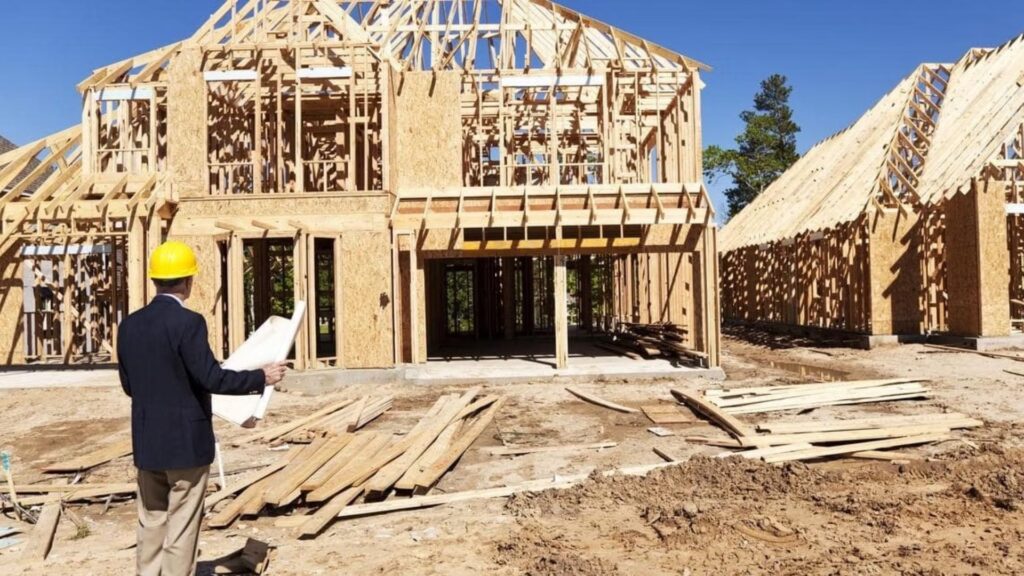
FAQs: About Hourly Rate For Self Employed Builder
Conclusion
In conclusion, determining a fair hourly rate is crucial for both builders and clients. Builders should consider their skills, experience, and the market demand to set a rate that reflects the value they provide, while clients need to understand the importance of quality work and the expertise behind it. A key takeaway for both parties is the importance of transparency and communication throughout the process. Builders should clearly explain how their rates are calculated, and clients should be open about their budget and expectations. By prioritizing fairness, both builders and clients can establish a relationship built on trust, ensuring that the rate agreed upon is beneficial for everyone involved. Ultimately, with careful consideration and open dialogue, it’s possible to find a rate that meets the needs of both the builder and the client, fostering a successful and long-lasting partnership.
Find A Professional Builders Company Near You!
- Auckland Builders For Small Jobs
- Builders Alexandra
- Builders Ashburton
- Builders Auckland
- Builders Blenheim
- Builders Cambridge
- Builders Central Otago
- Builders Christchurch
- Builders Clyde
- Builders Cromwell
- Builders Dunedin
- Builders Feilding
- Builders Gisborne
- Builders Hamilton
- Builders Hastings
- Builders Havelock North
- Builders Hawkes Bay
- Builders Hibiscus Coast
- Builders Invercargill
- Builders Johnsonville
- Builders Kapiti
- Builders Kerikeri
- Builders Levin
- Builders Lower Hutt
- Builders Manawatu
- Builders Masterton
- Builders Mosgiel
- Builders Napier
- Builders Nelson
- Builders New Plymouth
- Builders Oamaru
- Builders Paihia
- Builders Palmerston North
- Builders Paraparaumu
- Builders Porirua
- Builders Pukekohe
- Builders Queenstown
- Builders Rangiora
- Builders Rolleston
- Builders Taupo
- Builders Tauranga
- Builders Te Awamutu
- Builders Timaru
- Builders Tokoroa
- Builders Upper Hutt
- Builders Waikanae
- Builders Wanaka
- Builders Warkworth
- Builders Wellington
- Builders West Auckland
- Builders Whakatane
- Builders Whanganui
- Builders Whangarei
- Handyman Wellington
- Home Builders Rotorua
- Kitchen Removal Service Auckland
- Wellington Builders For Small Jobs
About the Author:
Mike Veail is a recognized digital marketing expert with over 6 years of experience in helping tradespeople and small businesses thrive online. A former quantity surveyor, Mike combines deep industry knowledge with hands-on expertise in SEO and Google Ads. His marketing strategies are tailored to the specific needs of the trades sector, helping businesses increase visibility and generate more leads through proven, ethical methods.
Mike has successfully partnered with numerous companies, establishing a track record of delivering measurable results. His work has been featured across various platforms that showcase his expertise in lead generation and online marketing for the trades sector.
Learn more about Mike's experience and services at https://theleadguy.online or follow him on social media:

